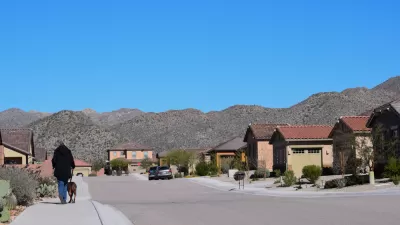Housing costs are skyrocketing all over the country. Does that sound familiar? How worried should we all be that the current boom will have similar consequences as the previous housing boom?
An article by Reuven Glick, Kevin J. Lansing, and Daniel Molitor, writing for the federal Reserve bank of San Francisco, addresses a critical question: "What's Different about the Latest Housing Boom?"
For anyone who lived through the Great Recession and the most recent housing boom, or bubble rather, it's natural to look on the current brisk housing market in many places around the country with a healthy amount of skepticism.
The team at the Federal Reserve Bank of San Francisco, however, have reason to alleviate such concerns:
"We find that the increase in U.S. house prices since 2011 differs in significant ways from the mid-2000s housing boom. The prior episode can be described as a credit-fueled bubble in which housing valuation—as measured by the house price-to-rent ratio—and household leverage—as measured by the mortgage debt-to-income ratio—rose together in a self-reinforcing feedback loop. In contrast, the more recent episode exhibits a less-pronounced increase in housing valuation together with an outright decline in household leverage—a pattern that is not suggestive of a credit-fueled bubble."
The article considers three indicators: 1) the median U.S. house price, 2) the number of private-sector workers employed in construction, and 3) the number of new housing starts, including both single- and multi-family homes. The first of those indicators is especially important, according to the article, because increases in asset prices are a fairly reliable portent.
Still, the post insists, this time is different. The remainder of the post goes into a lot of technical detail to back up that claim, relying especially on the current boom's "less-pronounced increase in the house price-to-rent ratio" and "outright decline in the ratio of household mortgage debt to personal disposable income."
FULL STORY: What’s Different about the Latest Housing Boom?

Alabama: Trump Terminates Settlements for Black Communities Harmed By Raw Sewage
Trump deemed the landmark civil rights agreement “illegal DEI and environmental justice policy.”

Planetizen Federal Action Tracker
A weekly monitor of how Trump’s orders and actions are impacting planners and planning in America.

The 120 Year Old Tiny Home Villages That Sheltered San Francisco’s Earthquake Refugees
More than a century ago, San Francisco mobilized to house thousands of residents displaced by the 1906 earthquake. Could their strategy offer a model for the present?

In Both Crashes and Crime, Public Transportation is Far Safer than Driving
Contrary to popular assumptions, public transportation has far lower crash and crime rates than automobile travel. For safer communities, improve and encourage transit travel.

Report: Zoning Reforms Should Complement Nashville’s Ambitious Transit Plan
Without reform, restrictive zoning codes will limit the impact of the city’s planned transit expansion and could exclude some of the residents who depend on transit the most.

Judge Orders Release of Frozen IRA, IIJA Funding
The decision is a victory for environmental groups who charged that freezing funds for critical infrastructure and disaster response programs caused “real and irreparable harm” to communities.
Urban Design for Planners 1: Software Tools
This six-course series explores essential urban design concepts using open source software and equips planners with the tools they need to participate fully in the urban design process.
Planning for Universal Design
Learn the tools for implementing Universal Design in planning regulations.
Clanton & Associates, Inc.
Jessamine County Fiscal Court
Institute for Housing and Urban Development Studies (IHS)
City of Grandview
Harvard GSD Executive Education
Toledo-Lucas County Plan Commissions
Salt Lake City
NYU Wagner Graduate School of Public Service





























